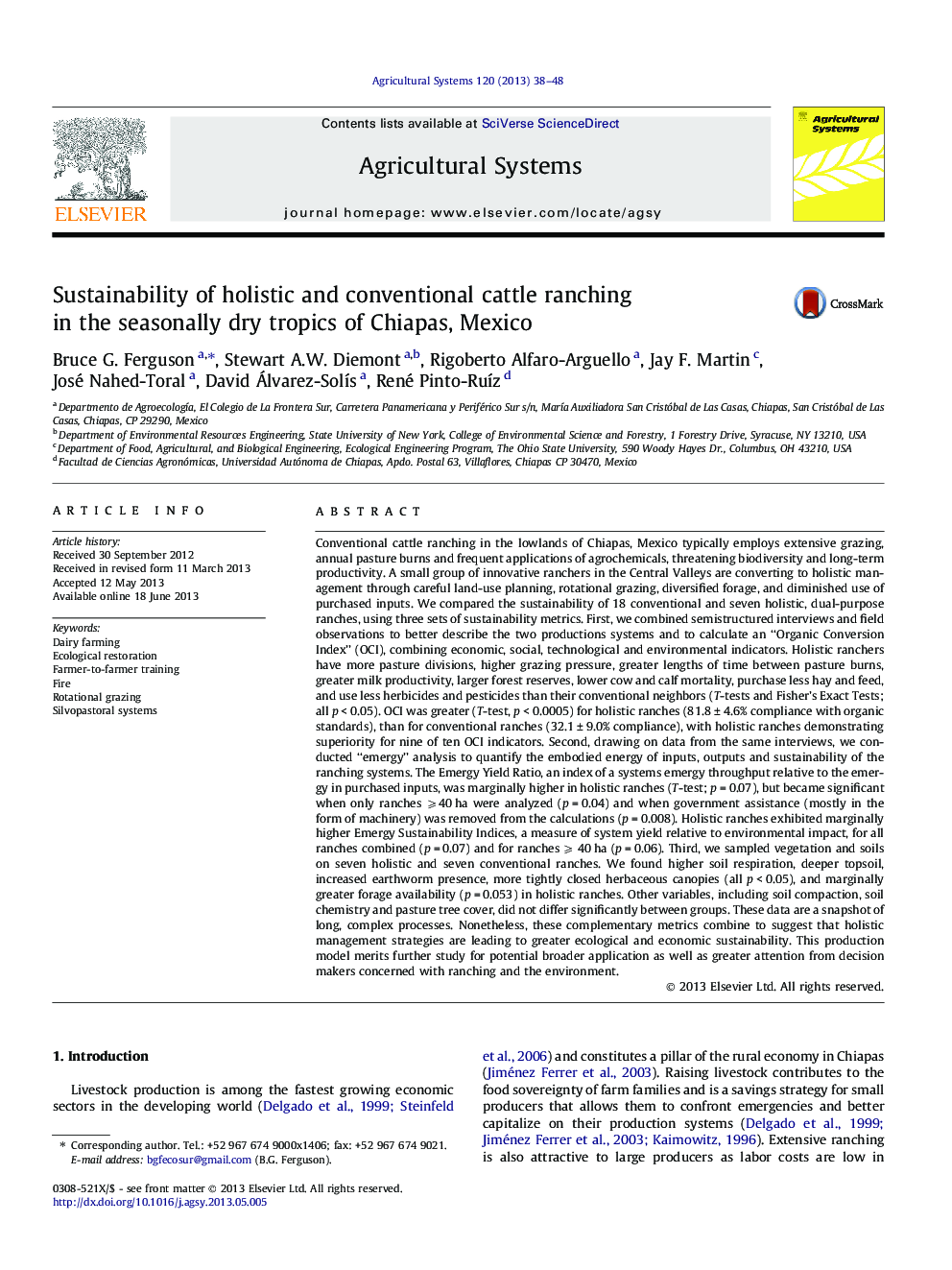| کد مقاله | کد نشریه | سال انتشار | مقاله انگلیسی | نسخه تمام متن |
|---|---|---|---|---|
| 6368677 | 1623250 | 2013 | 11 صفحه PDF | دانلود رایگان |
- We compared management and ecological outcomes on holistic and conventional ranches.
- Holistic ranchers use rotational grazing, minimize purchased inputs and do not burn.
- Their pastures have denser grass, deeper topsoil, and more earthworms.
- Holistic management is leading to greater ecological and economic sustainability.
Conventional cattle ranching in the lowlands of Chiapas, Mexico typically employs extensive grazing, annual pasture burns and frequent applications of agrochemicals, threatening biodiversity and long-term productivity. A small group of innovative ranchers in the Central Valleys are converting to holistic management through careful land-use planning, rotational grazing, diversified forage, and diminished use of purchased inputs. We compared the sustainability of 18 conventional and seven holistic, dual-purpose ranches, using three sets of sustainability metrics. First, we combined semistructured interviews and field observations to better describe the two productions systems and to calculate an “Organic Conversion Index” (OCI), combining economic, social, technological and environmental indicators. Holistic ranchers have more pasture divisions, higher grazing pressure, greater lengths of time between pasture burns, greater milk productivity, larger forest reserves, lower cow and calf mortality, purchase less hay and feed, and use less herbicides and pesticides than their conventional neighbors (T-tests and Fisher's Exact Tests; all p < 0.05). OCI was greater (T-test, p < 0.0005) for holistic ranches (81.8 ± 4.6% compliance with organic standards), than for conventional ranches (32.1 ± 9.0% compliance), with holistic ranches demonstrating superiority for nine of ten OCI indicators. Second, drawing on data from the same interviews, we conducted “emergy” analysis to quantify the embodied energy of inputs, outputs and sustainability of the ranching systems. The Emergy Yield Ratio, an index of a systems emergy throughput relative to the emergy in purchased inputs, was marginally higher in holistic ranches (T-test; p = 0.07), but became significant when only ranches ⩾40 ha were analyzed (p = 0.04) and when government assistance (mostly in the form of machinery) was removed from the calculations (p = 0.008). Holistic ranches exhibited marginally higher Emergy Sustainability Indices, a measure of system yield relative to environmental impact, for all ranches combined (p = 0.07) and for ranches ⩾ 40 ha (p = 0.06). Third, we sampled vegetation and soils on seven holistic and seven conventional ranches. We found higher soil respiration, deeper topsoil, increased earthworm presence, more tightly closed herbaceous canopies (all p < 0.05), and marginally greater forage availability (p = 0.053) in holistic ranches. Other variables, including soil compaction, soil chemistry and pasture tree cover, did not differ significantly between groups. These data are a snapshot of long, complex processes. Nonetheless, these complementary metrics combine to suggest that holistic management strategies are leading to greater ecological and economic sustainability. This production model merits further study for potential broader application as well as greater attention from decision makers concerned with ranching and the environment.
Journal: Agricultural Systems - Volume 120, September 2013, Pages 38-48
